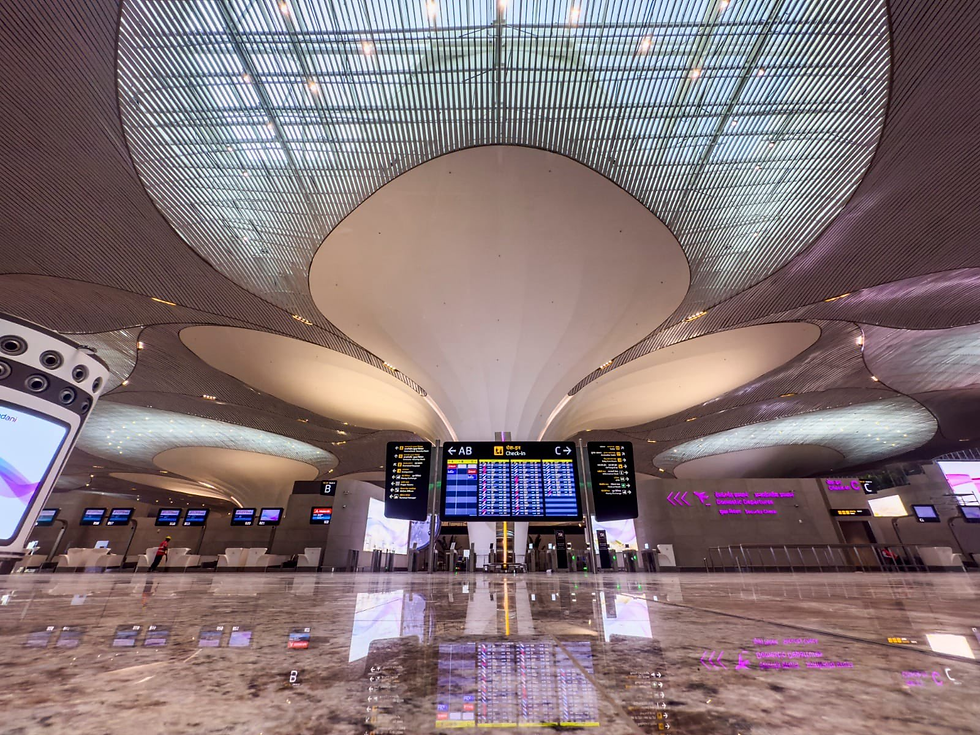BMW Launches A Yacht Called THE ICON. Have A Look At The Pics & Deets
- Pritish Bagdi

- May 20, 2023
- 4 min read
This unusual cooperation between BMW and boat manufacturer TYDE, named THE ICON, has recently premiered, pioneering a new stage in sustainable luxury.
Pritish Bagdi

Electric range (WLTP) 488–560 in km Power consumption 23,3–20,8 kWh/100 km (combined)
A luxurious yacht outfitted with i3 batteries that, when completely charged, can go more than 50 nautical miles or 100 km. According to Peter Dengler, the project's director, this is conceivable in all sectors. "Mobility on water consumes nearly ten times as much energy as mobility on land." In the meantime, professional sailing has developed techniques for significantly reducing energy use, paving the door for climate-friendly solutions. Decarbonization of mobility is already happening in some locations. However, there has not yet been any innovation in other fields, thus decarbonization has not even begun. On the sea, there is currently no equivalent of luxury electric vehicles like the BMW i7 M70."
The Idea for THE ICON
Just as the tides are created by the interaction of the earth and the moon, the interplay of two factors was crucial in this shared vision: a focus on innovation and the joy of sustainable mobility.
Because, as Peter Dengler, head of THE ICON project, points out, this can be made possible in all segments. “Mobility on water is nearly ten times more energy-intensive than mobility on land. In the meantime, however, professional sailing has come up with solutions for substantially saving energy, paving the way for climate-friendly solutions. The decarbonization of mobility is already taking place in some areas. In other areas, however, there has not yet been innovation, so decarbonization has not even begun. There is currently no equivalent of luxury electric vehicles like the BMW i7 M70 offered on the water.” He saw an extraordinary fascination in that visionary triad of sustainability, luxury and conscious pleasure: “Our team was particularly driven by the idea of creating the magical combination of innovation, digitalization and the relationship between people and technology, but most importantly, an incomparable zero-emission experience for the water.” What does the new mobility on the water look like? “The same characteristics found in BMW luxury vehicles like the BMW i7 M70 will be key in this element too: maximum sustainability combined with design, innovation and a unique driving experience.”
TYDE and the technical milestones
TYDE, a new, progressive lifestyle tech company and provider of experiences for luxury mobility at sea, was also at the rudder of this intelligent transfer of technology and expertise in the development of THE ICON. Dr. Christoph Ballin, the longstanding CEO of electric mobility pioneer Torqeedo, was instrumental in making electric mobility on the water fit for everyday use. Tobias Hoffritz is already a long-standing partner of BMW for technology and innovation projects with his company Second Sphere. Developing the first maritime luxury electric vehicle has been an exciting journey for both: “THE ICON has a wealth of groundbreaking innovations on board that are suitable for anchoring climate-friendly mobility in the high-end segment as well. The yacht is available as a series product, and the technology platform developed means the model range can easily be expanded.”
Technical inspiration

The team broke free from the shackles of established development and design conventions right from the start. They deliberately set out not to design a boat, but rather create their own experience on the water. BMW has had trailblazing experience and long-standing involvement in sailing sports such as the premier class America’s Cup, the Formula 1 equivalent of boat racing.
A team of engineers built the first bridge between nautical technology and the most advanced electric mobility. Leading experts from all over the world were brought on board for this – including Guillaume Verdier, the world’s leading designer of the fastest and most efficient sailboats and responsible for the hull and hydrofoil of the last winning boat in the America’s Cup.
Foiling technology delivers up to 80-percent energy saving

Foiling, a technology that delivers up to 80-percent energy saving, is a pioneering technical development that supports the sustainability goals of the new watercraft. This means BMW i batteries can be used as a power source. How does that work? Foils consist of a stabilizing fin and two wings. They act like underwater wings that allow the watercraft to literally hover over the water – enabling THE ICON to be electrified by the power of BMW batteries alone.
The upper-side curvature creates a negative pressure, generating buoyancy. Water resistance on the hull is no longer a factor. The craft is lifted out of the water, reducing the resistance to a minimum – the watercraft literally hovers over the water. Two propellers on the rear foil provide propulsion for THE ICON. It takes between 10 and 12 seconds from startup to hovering. Flying about one meter above the water, feeling no wave impact at all feels exactly the same as comfortably gliding in the rear of the BMW i7.
Better interaction between people and technology

Dengler and Hoffritz found the interface was much more advanced in cars than on yachts. As a result, all maritime controls and navigation displays were bundled into a single control interface. “The intuitive, integrated user interface, based on the BMW ID8 operating system and a touch-sensitive display, delivers an automotive standard in boating,” explains Dengler. This ensures that operation is intuitive and integrative and can also be controlled interactively via voice commands.
"There was a lot of digital technology involved. We were able to use VR glasses to experience the space and see how the perspectives worked before the built model was ready."
Tommy Forsgren Lead Designer on the Munich-based Designworks team













Comments